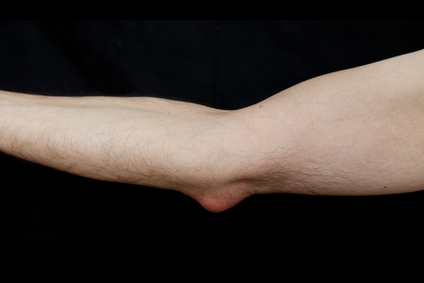Bursitis
Definition of Bursitis
Bursitis is the inflammation of one or more bursae (small sacs) of synovial fluid in the body. The bursae rest at the points where internal functionaries, such as muscles and tendons, slide across bone. Healthy bursae create a smooth, almost frictionless functional gliding surface making normal movement painless. When bursitis occurs, however, movement relying upon the inflamed bursa becomes difficult and painful. Moreover, movement of tendons and muscles over the inflamed bursa aggravates its inflammation, perpetuating the problem. Muscle can also be stiffened.
Cause of Bursitis
Bursitis is commonly caused by repetitive movement and excessive pressure. Shoulders, elbows and knees are the most commonly affected. Inflammation of the bursae might also be caused by other inflammatory conditions such as rheumatoid arthritis and gout. Infrequently, scoliosis can cause bursitis of the shoulders; however, shoulder bursitis is more commonly caused by overuse of the shoulder joint and related muscles.
Traumatic injury is another cause of bursitis. The inflammation irritates because the bursa no longer fits in the original small area between the bone and the functionary muscle or tendon. When the bone increases pressure upon the bursa, bursitis results. Sometimes the reason is unknown. It can also be associated with some chronic systemic diseases.
Signs and Symptoms of Bursitis
Bursitis symptoms vary from local joint pain and stiffness, to stinging pain that surrounds the joint around the inflamed bursa. In this condition, the pain usually is worse during and after activity, and then the bursa and the surrounding joint become stiff the next morning.
Risk Factors for Bursitis
Anybody can get bursitis. It is more common among people who have jobs or hobbies that involve repetitive movement of a particular joint or groups of joints, or constant pressure on a particular area (e.g. playing lots of tennis or golf, sitting for long periods of time).
Inflammation of the bursae might also be caused by other inflammatory conditions such as rheumatoid arthritis and gout.
It can also be associated with some chronic systemic diseases.
Diagnosis of Bursitis
Bursitis is diagnosed according to your symptoms and findings on a physical exam. If your bursitis can’t easily be diagnosed by a physical exam alone, ultrasound or magnetic resonance imaging (MRI) may be used. Blood tests or an analysis of fluid from the inflamed bursa to pinpoint the cause of the joint inflammation and pain can be performed, also.
Prevention from Bursitis
- Avoid repeating the same movements for long periods.
- Use kneepads and forearm bands during physical activity.
- Don’t sit for long periods, walk around at times. Avoid sitting on hard surfaces.
- When bending down to lift an object, bend and straighten your knees instead of your back or hips.
- Do proper warm-up exercises before exercising or playing sports.
- Choose comfortable shoes fitted to your feet.
Treatment of Bursitis
Bursae that are not infected can be treated with rest, ice, elevation, physiotherapy, anti-inflammatory drugs and pain medication. Since bursitis is caused by increased friction from the adjacent structures, a compression bandage is contraindicated because compression would create more friction on movement (passive and active). Advanced massage therapy techniques can also be employed to help with the inflammatory process of bursitis.
Bursae that are infected require further investigation and antibiotic therapy. In cases when all conservative treatment fails, surgical therapy may be necessary. In a bursectomy the bursa is cut out either endoscopically or with open surgery. The bursa grows back in place after a couple of weeks but without any inflammatory component.

